 W
WThe King George V-class battleships were the most modern British battleships in commission during World War II. Five ships of this class were built: HMS King George V, HMS Prince of Wales (1941), HMS Duke of York (1941), HMS Anson (1942) and HMS Howe (1942).
 W
WThe Revenge class, sometimes referred to as the Royal Sovereign class or the R class, consisted five superdreadnought battleships built for the Royal Navy in the 1910s. All of the ships were completed to see service during the First World War. There were originally to have been eight of the class, but two were later redesigned, becoming the Renown-class battlecruisers, while the other, which was to have been named HMS Resistance, was cancelled outright. The design was based on that of the preceding Queen Elizabeth class, but with reductions in size and speed to make them more economical to build.
 W
WThe Nelson class was a class of two battleships of the British Royal Navy, built shortly after, and under the terms of, the Washington Naval Treaty of 1922. They were the only British battleships built between the Revenge class and the King George V class, ordered in 1936.
 W
WThe Queen Elizabeth-class battleships were a group of five super-dreadnoughts built for the Royal Navy during the 1910s. The lead ship was named after Elizabeth I of England. These battleships were superior in firepower, protection and speed to their Royal Navy predecessors of the Iron Duke class as well as preceding German classes such as the König class. The corresponding Bayern-class ships were generally considered competitive, although the Queen Elizabeth class were 2 knots (3.7 km/h) faster and outnumbered the German class 5:2. The Queen Elizabeths are generally considered the first fast battleships of their day.
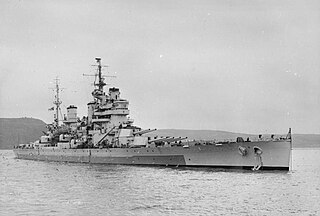 W
WHMS Anson was a King George V-class battleship of the Royal Navy, named after Admiral George Anson. She was built by Swan Hunter and Wigham Richardson Shipyard and launched on 24 February 1940, being completed on 22 June 1942. Her completion was delayed to allow the fitting of fire-control radar and additional anti-aircraft weapons. She was originally to have been named Jellicoe, but was renamed Anson in February 1940.
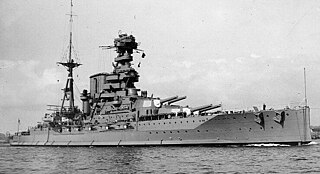 W
WHMS Barham was a Queen Elizabeth-class battleship built for the Royal Navy during the early 1910s. Often used as a flagship, she participated in the Battle of Jutland during the First World War as part of the Grand Fleet. For the rest of the war, except for the inconclusive action of 19 August 1916, her service generally consisted of routine patrols and training in the North Sea.
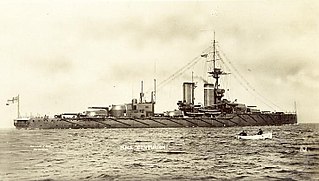 W
WHMS Centurion was the second of four King George V-class dreadnought battleships built for the Royal Navy in the early 1910s. She spent the bulk of her career assigned to the Home and Grand Fleets. Aside from participating in the failed attempt to intercept the German ships that had bombarded Scarborough, Hartlepool and Whitby in late 1914, and the Battle of Jutland in May 1916, her service during the First World War generally consisted of routine patrols and training in the North Sea.
 W
WHMS Duke of York was a King George V-class battleship of the Royal Navy. Laid down in May 1937, the ship was constructed by John Brown and Company at Clydebank, Scotland, and commissioned into the Royal Navy on 4 November 1941, subsequently seeing combat service during the Second World War.
 W
WHMS Howe was the last of the five British King George V-class battleships of the Royal Navy. Built by Fairfield Shipbuilding and Engineering Company, she was laid down on 1 June 1937 and launched 9 April 1940. She was originally to have been named Beatty but this was changed to Howe, after Admiral Richard Howe.
 W
WHMS Iron Duke was a dreadnought battleship of the Royal Navy, the lead ship of her class, named in honour of Arthur Wellesley, 1st Duke of Wellington. She was built by Portsmouth Dockyard, and her keel laid in January 1912. Launched ten months later, she was commissioned into the Home Fleet in March 1914 as the fleet flagship. She was armed with a main battery of ten 13.5-inch (340 mm) guns and was capable of a top speed of 21.25 knots.
 W
WHMS King George V was the lead ship of the five British King George V-class battleships of the Royal Navy. Laid down in 1937 and commissioned in 1940, King George V operated during the Second World War in all three major theatres of war, the Atlantic, Mediterranean and Pacific, as well as part of the British Home Fleet and Pacific Fleets. In May 1941, along with HMS Rodney, King George V was involved in the hunt for and pursuit of the German battleship Bismarck, eventually inflicting severe damage which led to the German vessel's sinking. On 1 May 1942 the destroyer HMS Punjabi sank after a collision with King George V in foggy conditions. King George V took part in Operation Husky and bombarded the island of Levanzo and the port of Trapani. She also escorted part of the surrendered Italian Fleet, which included the battleships Andrea Doria and Duilio, to Malta. In 1945 King George V took part in operations against the Japanese in the Pacific.
 W
WHMS Malaya was a Royal Navy Queen Elizabeth-class battleship ordered in 1913 and commissioned in 1916. Shortly after commissioning she fought in the Battle of Jutland as part of the Grand Fleet. Other than that battle, and the inconclusive Action of 19 August, her service during the First World War mostly consisted of routine patrols and training in the North Sea.
 W
WHMS Nelson was the name ship of her class of two battleships built for the Royal Navy in the 1920s. They were the first battleships built to meet the limitations of the Washington Naval Treaty of 1922. Entering service in 1927, the ship spent her peacetime career with the Atlantic and Home Fleets, usually as the fleet flagship. During the early stages of World War II, she searched for German commerce raiders, missed participating in the Norwegian Campaign after she was badly damaged by a mine in late 1939, and escorted convoys in the Atlantic Ocean.
 W
WHMS Prince of Wales was a King George V-class battleship of the Royal Navy that was built at the Cammell Laird shipyard in Birkenhead, England. She had an extensive battle history, first seeing action in August 1940 while still being outfitted in her drydock when she was attacked and damaged by German aircraft. In her brief but storied career, she was involved in several key actions of the Second World War, including the May 1941 Battle of the Denmark Strait where she scored three hits against the German battleship Bismarck, forcing Bismarck to abandon her raiding mission and head to port for repairs. Prince of Wales later escorted one of the Malta convoys in the Mediterranean, and then attempted to intercept Japanese troop convoys off the coast of Malaya as part of Force Z when she was sunk on 10 December 1941, two days after the attack on Pearl Harbor.
 W
WHMS Queen Elizabeth was the lead ship of her class of dreadnought battleships built for the Royal Navy in the early 1910s, and was often used as a flagship. She served in the First World War as part of the Grand Fleet, and participated in the inconclusive action of 19 August 1916. Her service during the war generally consisted of routine patrols and training in the North Sea. She and the other super-dreadnought battleships were the first of their type to be powered by oil instead of coal. Queen Elizabeth later served in several theatres during the Second World War, and was ultimately scrapped in 1948.
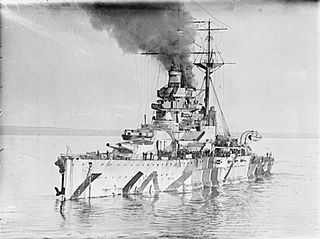 W
WHMS Ramillies was one of five Revenge-class super-dreadnought battleships built for the Royal Navy during the First World War. They were developments of the Queen Elizabeth-class battleships, with reductions in size and speed to offset increases in the armour protection whilst retaining the same main battery of eight 15-inch (381 mm) guns. Completed in late 1917, Ramillies saw no combat during the war as both the British and the German fleets had adopted a more cautious strategy by this time owing to the increasing threat of naval mines and submarines.
 W
WHMS Resolution was one of five Revenge-class battleships built for the Royal Navy during the First World War. Completed in December 1916, Resolution saw no combat during the war as both the British and German fleets adopted a more cautious strategy after the Battle of Jutland in May owing to the increasing threat of naval mines and submarines.
 W
WHMS Revenge was the lead ship of five Revenge-class super-dreadnought battleships built for the Royal Navy during the First World War in the mid-1910s. The ships were developments of the Queen Elizabeth-class battleships, with reductions in size and speed to offset increases in armour protection whilst retaining the same main battery of eight 15-inch (381 mm) guns. She was laid down in 1913, launched in 1915, and was commissioned in February 1916, early enough to be worked up in time to see action with the Grand Fleet at the Battle of Jutland in May that year. During the engagement, she engaged German battlecruisers, damaging two of them before being forced to turn away to avoid torpedoes that damaged her squadron flagship and caused the squadron to lose contact with the rest of the fleet. Revenge emerged from the battle unscathed, but she saw no further action during the war, as the British and German fleets turned to more cautious strategies owing to the risk of submarines and naval mines.
 W
WHMS Rodney was one of two Nelson-class battleships built for the Royal Navy in the mid-1920s. The ship entered service in 1928, and spent her peacetime career with the Atlantic and Home Fleets, sometimes serving as a flagship when her sister ship, Nelson, was being refitted. During the early stages of the Second World War, she searched for German commerce raiders, participated in the Norwegian Campaign, and escorted convoys in the Atlantic Ocean. Rodney played a major role in the sinking of the German battleship Bismarck in mid-1941.
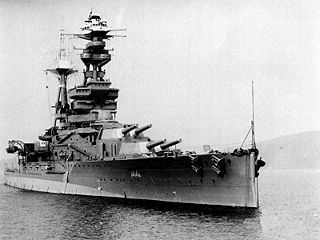 W
WHMS Royal Oak was one of five Revenge-class battleships built for the Royal Navy during the First World War. Completed in 1916, the ship first saw combat at the Battle of Jutland as part of the Grand Fleet. In peacetime, she served in the Atlantic, Home and Mediterranean fleets, more than once coming under accidental attack. Royal Oak drew worldwide attention in 1928 when her senior officers were controversially court-martialled, an event that brought considerable embarrassment to what was then the world's largest navy. Attempts to modernise Royal Oak throughout her 25-year career could not fix her fundamental lack of speed and, by the start of the Second World War, she was no longer suitable for front-line duty.
 W
WHMS Royal Sovereign was a Revenge-class battleship of the Royal Navy displacing 29,970 long tons (30,450 t) and armed with eight 15-inch (381 mm) guns in four twin-gun turrets. She was laid down in January 1914 and launched in April 1915; she was completed in May 1916, but was not ready for service in time to participate in the Battle of Jutland at the end of the month. She served with the Grand Fleet for the remainder of the First World War, but did not see action. In the early 1930s, she was assigned to the Mediterranean Fleet and based in Malta.
 W
WHMS Valiant was one of five Queen Elizabeth-class battleships built for the Royal Navy during the early 1910s. She participated in the Battle of Jutland during the First World War as part of the Grand Fleet. Other than that battle, and the inconclusive Action of 19 August, her service during the war generally consisted of routine patrols and training in the North Sea. She saw further action during the Second World War in the Mediterranean and Far East.
 W
WHMS Warspite was a Queen Elizabeth-class battleship built for the Royal Navy during the early 1910s. Completed during the First World War in 1915, she was assigned to the Grand Fleet and participated in the Battle of Jutland. Other than that battle, and the inconclusive Action of 19 August, her service during the war generally consisted of routine patrols and training in the North Sea. During the interwar period the ship was deployed in the Atlantic Ocean and the Mediterranean Sea, often serving as flagship, and was thoroughly modernised in the mid-1930s.